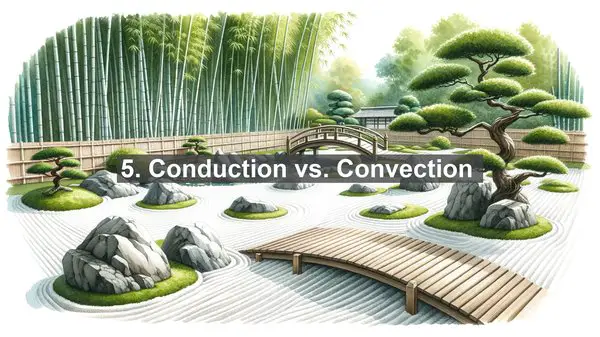Introduction to Commonly Confused Words
As students of Plasma Science, we often come across words that seem similar but have distinct meanings. These words, when confused, can lead to misunderstandings and errors in our work. In this lesson, we’ll explore the top 10 such words and understand their correct usage. So, let’s get started!
1. Ion vs. Electron
The first pair of words that often causes confusion is ‘ion’ and ‘electron.’ While both are fundamental particles, they differ in their charge. An ion is an atom or molecule that has gained or lost electrons, resulting in a positive or negative charge. On the other hand, an electron is a negatively charged subatomic particle. So, remember, ions have a charge, while electrons are the carriers of that charge.
2. Plasma vs. Gas
Plasma and gas are often used interchangeably, but they have distinct properties. While both are states of matter, plasma is ionized gas, meaning it contains free electrons and positive ions. This ionization gives plasma unique properties, such as conductivity and the ability to respond to electric and magnetic fields. So, whenever you hear ‘plasma,’ think of an ionized gas with fascinating characteristics.

3. Fusion vs. Fission
Fusion and fission are two processes that release energy, but they differ in how they do it. Fusion is the process of combining two light atomic nuclei to form a heavier nucleus, releasing a tremendous amount of energy in the process. Fission, on the other hand, is the splitting of a heavy atomic nucleus into two or more lighter nuclei, also accompanied by the release of energy. While both are powerful processes, they occur under different conditions and have different applications.
4. Magnetic Field vs. Electric Field
Magnetic fields and electric fields are closely related but have distinct characteristics. A magnetic field is produced by moving electric charges, such as current in a wire or the motion of electrons. It exerts a force on other moving charges. An electric field, on the other hand, is produced by stationary charges, such as a charged particle at rest. It exerts a force on other charged particles, whether they’re stationary or in motion. So, remember, moving charges create magnetic fields, while stationary charges create electric fields.
5. Conduction vs. Convection
Conduction and convection are two mechanisms of heat transfer. Conduction is the transfer of heat through direct contact between particles or objects. It occurs in solids, where particles are closely packed. Convection, on the other hand, is the transfer of heat through the movement of a fluid, such as a liquid or gas. It involves the transfer of heat energy through the bulk movement of the fluid. So, when it comes to heat transfer, think of conduction as direct contact and convection as fluid movement.
6. Density vs. Pressure
Density and pressure are both properties of matter but describe different aspects. Density is the mass of a substance per unit volume. It tells us how tightly packed the particles are. Pressure, on the other hand, is the force exerted per unit area. It’s the result of particles colliding with a surface. So, while density describes the compactness of a substance, pressure measures the force it exerts on its surroundings.
7. Neutrino vs. Neutron
Neutrinos and neutrons are both subatomic particles, but they have distinct properties. Neutrinos are electrically neutral and have an extremely small mass. They’re produced in various nuclear reactions and can pass through matter almost unaffected. Neutrons, on the other hand, are electrically neutral but have a significant mass. They’re found in the nucleus of an atom and play a crucial role in nuclear reactions. So, while neutrinos are elusive and interact weakly, neutrons are relatively massive and play a vital role in atomic structure.

8. Emission vs. Absorption
Emission and absorption are two processes related to the interaction of light with matter. Emission is the release of light or electromagnetic radiation by a substance. It occurs when the substance’s electrons transition from higher energy levels to lower ones, releasing energy in the form of light. Absorption, on the other hand, is the process of a substance capturing light energy. The substance’s electrons absorb the energy, causing them to transition to higher energy levels. So, while emission is the release of light, absorption is the capture of light.
9. Equilibrium vs. Steady State
Equilibrium and steady state are two concepts used to describe systems, but they have different meanings. Equilibrium refers to a state where the system’s properties, such as temperature, pressure, and composition, remain constant over time. It’s a state of balance. Steady state, on the other hand, refers to a condition where the system’s properties are constant, but there’s a continuous flow of matter or energy through the system. So, while equilibrium is a state of balance, steady state involves a dynamic balance.
10. Kinetic Energy vs. Thermal Energy
Kinetic energy and thermal energy are both forms of energy associated with the motion of particles, but they have different meanings. Kinetic energy is the energy of an object or particle due to its motion. It’s the energy it possesses by virtue of its speed or velocity. Thermal energy, on the other hand, is the total kinetic energy of all the particles in a substance. It’s the energy associated with the random motion of particles. So, while kinetic energy is the energy of individual particles, thermal energy is the collective energy of all particles in a substance.
